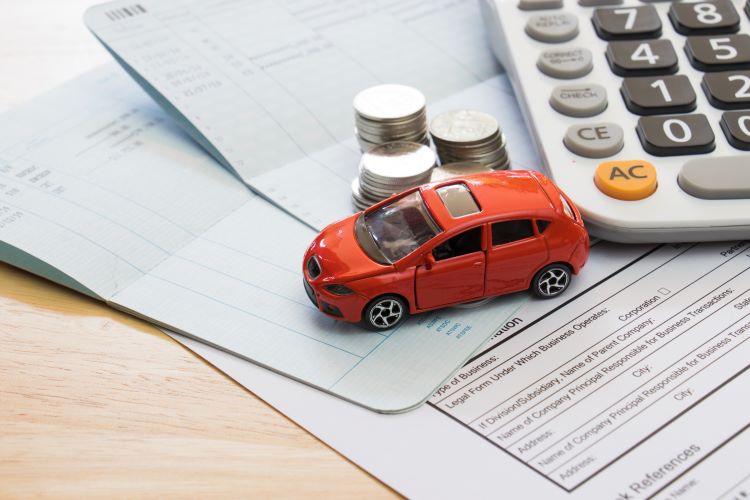Car Financing Explained: Complete Guide to Auto Loans
Choosing the right car loan affects both your monthly budget and long-term financial health. This guide breaks down how lenders set loan terms, differences between new, used, and refinance options, how APR and interest work, typical lender requirements, and practical tips to secure the best rate. Learn how to compare offers and make a smart financing decision.

Buying a car often means taking out a loan, and understanding how auto financing works can save you money and stress. This guide explains the main factors lenders consider, the loan types available, how interest and APR affect your cost, what documents you’ll need, how different lenders compare, and actionable tips for getting the most favorable terms.
What shapes your car loan terms
A combination of personal and vehicle-related factors determines the interest rate, monthly payment, and loan length you’ll be offered. Your credit score is typically the most influential: higher scores usually unlock lower rates and better options. Lenders also look at your income, employment stability, and debt-to-income ratio to assess your ability to repay. The size of your down payment matters too — putting more money down reduces the amount financed and can lower your rate.
Vehicle characteristics affect lending decisions as well. Newer cars generally qualify for more attractive rates and longer terms because they retain value and present lower risk to lenders. Older or high-mileage used cars can mean shorter terms and higher rates. Loan duration is another trade-off: longer terms lower monthly payments but increase total interest paid over the life of the loan.
Loan types and when to choose them
There are several common automobile financing products:
- New car loans: These often have the most competitive rates and the longest maximum terms since new vehicles are less risky collateral.
- Used car loans: Rates are typically a bit higher than for new cars, but the loan amounts can be smaller. Some lenders impose age or mileage limits on financed vehicles.
- Refinancing: If market rates fall or your credit improves, refinancing your existing auto loan can reduce your monthly payment or shorten your payoff timeline.
- Lease buyout financing: If you decide to keep a leased vehicle at the end of the lease, a lease buyout loan converts the lease balance into a standard auto loan.
Choosing the right product depends on your budget, how long you plan to keep the car, and whether you prioritize lower monthly payments or minimizing total interest.
Interest rates vs. APR: what to watch
Interest rate is the percentage charged on the loan principal. APR, or Annual Percentage Rate, represents the total yearly cost of borrowing and includes interest plus any lender fees rolled into the loan. APR is the most useful figure for comparing offers because it gives a fuller picture of cost.
Interest can be fixed or variable. Fixed rates keep your monthly payment constant for the life of the loan, making budgeting simpler. Variable rates can change with market conditions and may reduce payments at times, but they carry uncertainty. Your creditworthiness, current market rates, and lender policies determine the rate you’re offered.
Typical lender requirements
Most lenders will ask for documentation to confirm your identity, income, and financial stability. Common requirements include:
- Proof of income (pay stubs, tax returns, or bank statements)
- Employment verification or contact information for your employer
- A valid driver’s license and personal identification
- Social Security number for credit checks
- Proof of auto insurance
Lenders may also have eligibility rules such as minimum income thresholds or maximum vehicle age. Many require a down payment, commonly between 10% and 20% of the vehicle’s purchase price, though exceptions exist based on lender and borrower qualifications.
Comparing costs and lender types
Below is a general comparison of lender categories, typical APR ranges, loan term spans, and common credit score expectations.
| Lender Type | Typical APR Range | Loan Terms | Min. Credit Score |
|---|---|---|---|
| Banks | 3.25% - 7.25% | 24-84 months | 660+ |
| Credit Unions | 2.75% - 6.75% | 36-84 months | 640+ |
| Online Lenders | 3.50% - 15.00% | 24-72 months | 600+ |
| Dealership Finance | 4.00% - 18.00% | 24-84 months | 620+ |
Prices, rates, or cost estimates mentioned in this article are based on the latest available information but may change over time. Independent research is advised before making financial decisions.
Practical tips to secure a better loan
-
Check and correct your credit report before applying. Small errors can lower your score and cost you in higher interest. Request free reports and dispute mistakes.
-
Shop multiple lenders. Compare offers from banks, credit unions, online lenders, and dealership financing. Getting pre-approval from several sources helps you understand your options and strengthens bargaining power at the dealership.
-
Consider a larger down payment. The more you pay upfront, the less you finance, which reduces both monthly payments and total interest.
-
Choose the shortest loan term you can afford. Shorter terms usually carry lower rates and reduce total interest, though monthly payments will be higher.
-
Read the loan contract carefully. Check for origination fees, prepayment penalties, late fees, and any other charges that affect the total cost.
-
Refinance when conditions improve. If you qualify for a better rate later — because of improved credit or falling market rates — refinancing can lower your payments or shorten your payoff period.
Final considerations
Auto financing is a major financial decision. Take time to compare APRs, loan terms, and lender fees, and factor in how long you plan to keep the vehicle. With careful preparation, documentation, and shopping around, you can secure financing that fits your budget and long-term financial goals.





